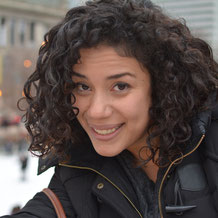Albalucía Ángel’s Estaba la pájara pinta sentada en el verde limón (1975) is one of those great novels imbued by the terrible charm of difficulty. Terrible because what we call difficulty does not always meet a non-contemplative reading, one that seeks to unite the discreet continuity of the novel, interrupted by fragmentation. Its difficulty is the same the author finds in answering Ana’s question: “What should one write to make the others understand?” (289)—a question that not only refers to the novel’s subject (what?), but also to its form (how?). Charm because deciphering it leads neither to the disappointment of meaning, nor to the temptation of spelling it out, of translating into a common language what is supposed to be an intricate puzzle. I call it great, not only because it finalizes a period and a genre that obsessed Colombian novelists, but also because it rectifies what we know as La novela de La Violencia within its own aesthetic boundaries, so to say. It is great, in sum, because twenty-first century readers agree this novel is not only the most daring, but also the greatest achievement of the experimental novel written in Colombia.
The novel’s narrative subject is the experience of a generation subdued by 1950s and 1960s civil and state violence. That violence is not only the novel’s historical background, but the incommunicability of such experience is precisely what the novel intends to convey. For twenty years, violence-related historical subjects transpired into literature as social realism, which in Colombia’s literary history is known as novela de La Violencia [novel of The Violence]. However, that literary genre was already exhausted, and readers went from satiety to disgust due to those novels’ inherent horror.
Ana, the main character of Albalucía Ángel’s Estaba la pájara pinta sentada en el verde limón (1975), is a young woman whose conscience is split between her childhood and the present moment; the hiatus is trauma, which she feels repeating itself as a nightmare. These two types of materials—historical and narrative, cloudy and melancholic—take the author away from social realism to show the mechanisms of repression working in the novel—which simultaneously alludes to and eludes the trauma of experiencing violence. Albalucía Ángel tells these experiences without having Ana ramble and rave about her grief. Instead, the young woman peeks into her conscience while lazily rolling in bed, arguing in her mind with Sabina, the housekeeper, who tries in vain to get her out of bed during the novel’s first two hundred pages.
We might get a better sense of the novel’s inner workings with the help of two metaphors. The first one comes from a book review that Virginia Woolf wrote in her youth and Harold Bloom quotes in Novelists and Novels: “Are we not each in truth the centre of innumerable rays which so strike upon one figure only, and is it not our business to flash them straight and completely back again, and never suffer a single shaft to blunt itself on the far side of us?” (Woolf qtd. in Bloom, 264). The figure upon which Ángel’s novel innumerable rays strike is Ana. She is at the center of a series of personal catastrophic events, but also suffers the effects of generalized violence. Those two series of rays strike her and tear her experience apart, taking her on a “long path that, according to her horoscope, should have been embroidered in roses, but wasn’t” (269).
Through digressions and intertexts, the novel abandons any idea of linearity to dig inward, alongside Ana’s consciousness and the historical events, thus adding background layers to each dimension of the narrative. Estaba la pájara pinta sentada en el verde limón is divided into segments the reader must collect from the text’s surface. Several depth planes cross the novel, so that events from the present become clear only after putting together the fragments that inform, vertically, the novel’s different strata. Two personal experiences, separated from each other by a couple of decades, structure the novel. Around them are woven complex narrative plots that develop in a semantic and syntactic parallelism, from the beginning to the end of the book. Digressions that allow temporary escapes towards other episodes in Ana’s biography and Colombia’s history “interrupt” those two experiences. The first one is Julieta’s death and burial. Julieta was Ana’s childhood friend, and this experience is remembered and told as a long flashback from the present day within the story (which I call Anasday to point out it is a “tiger leap” towards Joyce’s Ulysses). The second experience is identifying and burying Valeria’s body. Valeria is a friend from youth, and the memory of her burial is told one day after Anasday, through Ana’s already vague, divided consciousness. Both burials (in 1948 and 1967) take place at the same cemetery—unity of place that makes up for the fragmentation of time within the story.
The novel is wrapped up (it begins and ends in the same way) in a chapter split in two. In the first pages of the book this episode seems enigmatic because the reader ignores from whose point of view it is told, when it occurs, and which are the facts it discusses. Nonetheless, those few initial and final pages hold in the entire novel, and they only come to make sense in the end, when the two parts of the chapter are back-to-back. Two Dylan Thomas’s verses open Ángel’s novel: “The memories of childhood / have no order, and no end”. It has been pointed out that this epigraph heralds the novel’s chaos, the impossibility of deciphering its structure. However, when reading the novel with a pencil in one’s hand, to paraphrase George Steiner’s quote on critical reading, it becomes clear its rational, deliberately complex architecture—there is nothing in Estaba la pájara pinta… that is chaotic or left to chance. The novel’s structure is indeed intricate, but one need not look elsewhere to describe it, for the novel offers the reader a metaphor of itself (which is the second metaphor that I will expand on in this essay):
This is purgatory, she thought, she thinks again, and she is sure grandma knows. It is the law of Samsara, how clever!, grandma would have said: what are you saying, my little one! That it is the law of return […]. No one can escape, and who is going to know who you were then, who you are right now, grandma, she calls out in a whisper, and sees how the leaves fall from a tree in response. It is a huge chickadee that begins to bloom, anytime, it seems to say, and then she too hears Julieta’s laugh. Take down my braids! The blue bow ends in her hands and that is the signal to go wild. Footsteps chase her, the sound of laughter goads her, ready or not, here I come! (44)
The novel’s cyclic reiteration of themes and variations has little to do with the idea of purgatory and its path of purification. Instead, the second image from the passage, i.e., the wheel of life and Samsara’s spokes, offers suggestive structural analogies. The Wheel of Samsara represents the law of return, reincarnations, and afflictions of human beings according to the philosophical traditions of India, which is the author’s source. Samsara is, then, a state of suffering one must leave.
The wheel is divided into four concentric circles in whose segments, separated by spokes, are reproduced different scenes of birth, death, and reincarnation. The outermost circle displays allegories of the twelve links of dependent origination—the twelve causes of human suffering. Next, a six-spoke circle represents the six realms of existence and its cycles of birth, death, and rebirth. The third concentric circle is only divided in two parts—day on one side, and night on the other—, and it represents spirit’s constant movement from darkness to light, and vice versa. In the innermost circle (the axis that turns the whole wheel), three animals incessantly bite each other’s tail; they represent anger, ignorance, and greed, which breed each other. From the outside, a monster catches the wheel between its jaws and claws, not allowing anyone to escape. The Wheel of Samsara never stops.

The wheel’s movement is similar to the turns readers must take, for the novel rebuilds in concentric circles the plot of each segment that informs Ana’s biography, whose ends are the opacity of Julieta’s and Valeria’s deaths. Each segment includes fragments of other experiences that join the two poles of the story. Those experiences strike upon Ana’s figure—as in Woolf’s metaphor. The reader constantly moves from one wheel’s segment to another, and between the inner and outer circles of experience: in the outer circle are the fragments and documents that testify to the collective history, which is cause and effect of the private and family history. The center of the novel, like the center of the wheel, is an anger, greed and ignorance engine that moves the country’s history; both individual and historical experience are shut in, trapped by the monster with the skulls crown. The monster’s presence in the picture mirrors, in the novel, the violence within the family and civil society, as well as State and paramilitary violence.
The law of return forces Ana to turn on that wheel, not only because she seems to exist physically in two different time frames, remembering her life again and again, through the same cemetery galleries and corridors: “[The cemetery is] that death trap that branches off into labyrinths of corridors, trees, cries, prayers. It is absurd, hopelessly white, and it stinks” (289). The novel also displays its cyclical structure of adjacent pieces by reiterating linguistic and semantic signs: lullabies and children’s songs are the most prominent, for they keep showing up; in fact, one of those songs is the novel’s title. The repetitive nature of lullabies and children’s songs (typically sung while dancing in circles) reiterates the law of return. “Estaba la pájara pinta,” “A que te cojo ratón,” “Pin-pón es un muñeco,” and “Duérmete niña, flor de poleo,” among many other children’s songs, give the story its tempo, along with a heavy rhythm, in Ana’s recollection and delirium in the shape of concentric circles.
The stream of consciousness in this novel is not controlled by a confident narrator, who knows the information and releases it in dribbles. Here, the stream of consciousness works as an awakening facing the trauma of two grief experiences without closure. The story’s comings and goings hang from those two traumatic experiences, but there are few specific details about them. It is as if the novel were also dealing with the repression mechanisms of Ana’s conscience. Willingly or not, she recoils from those memories, digress, and makes free associations. In sum, all these mechanisms show the reader that it is impossible to see in full the traumatic, painful event, and to make sense of it.
Albalucía Ángel deliberately avoids García Márquez’s magical realism, which reached its peak with the publication of Cien años de soledad in 1967 and one decade later seemed the sole aesthetic path available. Ángel has no intention to “divert” the reader’s attention as she willingly testifies to the horror of historical violence. She does not want her testimony to seem volatile or metaphorical. Instead, she wants her account of violence to convey the incommunicability of violence—and she wants to prove, through her novel’s aesthetics, the impossibility of such endeavor. What should one write to make the others understand? The author answers the question through the unusual, experimental version of realism she puts together in Estaba la pájara pinta sentada en el verde limón (I would call it Samsaran realism). In her writing, Ángel dares to contest “universal truths” from literature and history, written “who knows where, and by whom”, as Ana claims (288).
Translated by Lorena Iglesias



